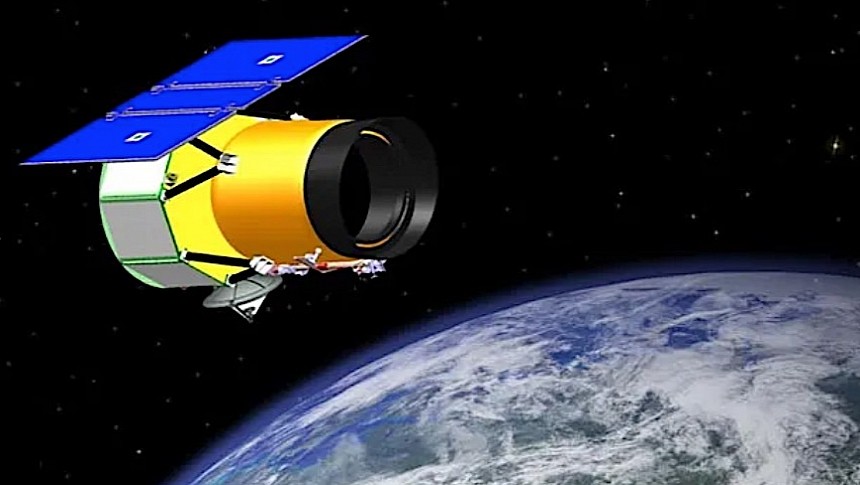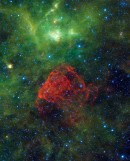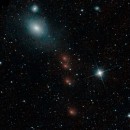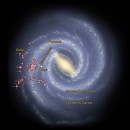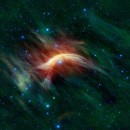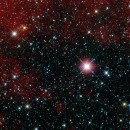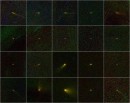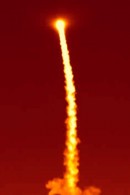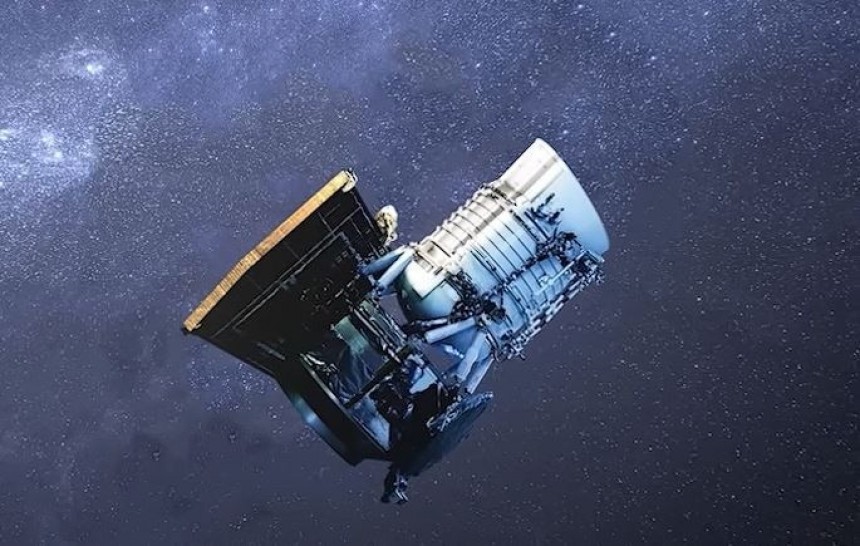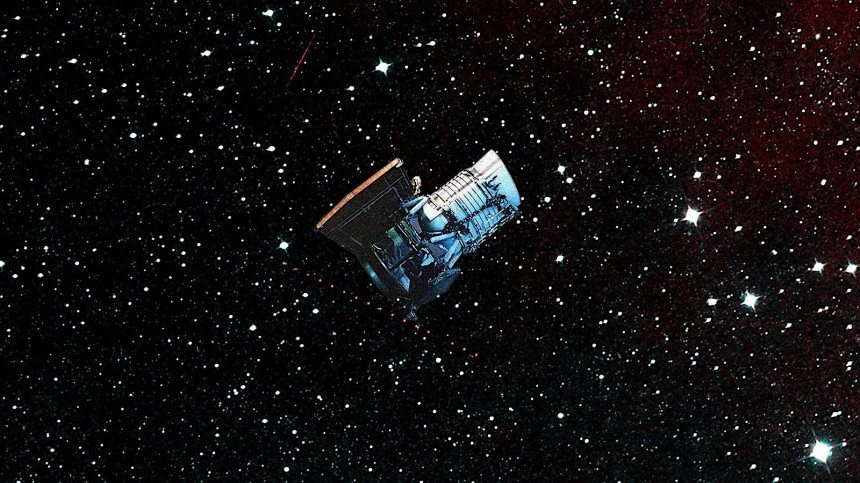Because of the way they are conceived, spacecraft and other such tools we use for the exploration of space become junk as soon as their primary mission has ended. Yet for a while now NASA has begun finding ways of reusing old space tech for purposes beyond its original scope.
The most recent such adventure involves the Origins, Spectral Interpretation, Resource Identification, and Security–Regolith Explorer spaceship. Launched in 2016, OSIRIS-Rex completed its primary mission earlier this year, when it delivered to the Utah desert 8.8 ounces (250 grams) of alien soil, snatched from the surface of an asteroid called Bennu.
The samples were dropped from orbit in a capsule, but the spacecraft itself stayed there. Instead of allowing it to rot up there (an impossibility, I know, but you get the point), NASA repurposed it, gave it new instructions, and sent it on its way for an encounter with the frightening asteroid called Apophis.
Renamed Origins, Spectral Interpretation, Resource Identification and Security – Apophis Explorer (OSIRIS-APEX), it should reach its new destination sometime in the spring of 2029 to take a closer look at a piece of space rock that once got people scared about a possible impact.
But this story is not about the two incarnations of the OSIRIS, but about an earlier reutilization of a piece of space gear. One that, for better or worse, will cease to exist soon enough on account of space forces that are beyond our control.
Back at the end of 2009, NASA launched a spacecraft called Wide-field Infrared Survey Explorer. WISE for short, it was a space telescope meant to look at the Universe through four infrared wavelength bands.
The spacecraft was technically a cryogenic telescope, meaning it relied on coolant to be able to look at the Universe's coldest objects. It didn't take up with it an unlimited quantity of the stuff, so in September 2010 it ran out of frozen hydrogen.
The telescope was put into hibernation in 2011, and it stayed so until 2013, when NASA decided to repurpose the thing. After all, the four-megapixel infrared cameras were perfect for spotting near-Earth asteroids and comets on their way to the Sun. On top of that, such space objects are heated by the Sun itself, and that meant there was no need for coolant for the device to spot them.
And so the telescope was born again, this time as a planetary defense tool called Near-Earth Object Wide-field Infrared Survey Explorer (NEOWISE). It was so successful at its job that it's almost impossible to find another telescope with such a track record in asteroid and comet hunting.
During a decade of science, NEOWISE took a look at the entire sky over 20 times, making 1.45 million infrared measurements of the space around us, or more precisely of no less than 44,000 objects that are spinning around the Sun in our solar system.
Of that huge number some 3,000 are near-Earth objects, 215 of which were never on our radar before the telescope spotted them. For almost all of them, NEOWISE data helped scientists here on Earth refine orbits and better define their size.
Aside from all of the above the planetary defense tool discovered 25 comets, including one you may know. Back in 2020, the Northern Hemisphere was adorned by a new celestial object for weeks on end. It was comet C/2020 F3, visible with the naked eye, but somehow relegated to the fourth page of news outlets because of the raging COVID pandemic.
Separately from its main mission, the telescope in both its forms also helped astronomers get a better sense of distant galaxies, cool stars, exploding white dwarfs, and pretty much everything that's going on in the Universe and our immediate vicinity.
But why am I using past tense to talk about it? Well, for the simple reason it will soon cease to exist, as the Sun is indirectly killing it.
The star that supports life on our little blue marble is entering a new cycle of increased activity. This happens every 11 years, and brings about solar flares and coronal mass ejections. These impact our atmosphere, which tends to expand.
This expansion means satellites and other spacecraft floating nearby (NEOWISE spins around Earth at an altitude of almost 500 km/308 miles) begin experiencing increased drag. This means they start to slowly sink back into the atmosphere.
For many of them, humans have ways to correct that tendency, but not for the telescope. Expectations are that by early 2025 the spacecraft will drop low enough to become unusable. It will eventually burn up above our planet, ending one of the most exciting chapters in the observation of space objects that may endanger our planet.
Even if it will physically disappear from the sky, NEOWISE's legacy will live on. The telescope has gathered enough data to keep astronomers busy for decades, possibly, and that means it may still contribute to keeping us relatively safe from space dangers even after it's gone.
The samples were dropped from orbit in a capsule, but the spacecraft itself stayed there. Instead of allowing it to rot up there (an impossibility, I know, but you get the point), NASA repurposed it, gave it new instructions, and sent it on its way for an encounter with the frightening asteroid called Apophis.
Renamed Origins, Spectral Interpretation, Resource Identification and Security – Apophis Explorer (OSIRIS-APEX), it should reach its new destination sometime in the spring of 2029 to take a closer look at a piece of space rock that once got people scared about a possible impact.
But this story is not about the two incarnations of the OSIRIS, but about an earlier reutilization of a piece of space gear. One that, for better or worse, will cease to exist soon enough on account of space forces that are beyond our control.
Back at the end of 2009, NASA launched a spacecraft called Wide-field Infrared Survey Explorer. WISE for short, it was a space telescope meant to look at the Universe through four infrared wavelength bands.
The spacecraft was technically a cryogenic telescope, meaning it relied on coolant to be able to look at the Universe's coldest objects. It didn't take up with it an unlimited quantity of the stuff, so in September 2010 it ran out of frozen hydrogen.
And so the telescope was born again, this time as a planetary defense tool called Near-Earth Object Wide-field Infrared Survey Explorer (NEOWISE). It was so successful at its job that it's almost impossible to find another telescope with such a track record in asteroid and comet hunting.
During a decade of science, NEOWISE took a look at the entire sky over 20 times, making 1.45 million infrared measurements of the space around us, or more precisely of no less than 44,000 objects that are spinning around the Sun in our solar system.
Of that huge number some 3,000 are near-Earth objects, 215 of which were never on our radar before the telescope spotted them. For almost all of them, NEOWISE data helped scientists here on Earth refine orbits and better define their size.
Aside from all of the above the planetary defense tool discovered 25 comets, including one you may know. Back in 2020, the Northern Hemisphere was adorned by a new celestial object for weeks on end. It was comet C/2020 F3, visible with the naked eye, but somehow relegated to the fourth page of news outlets because of the raging COVID pandemic.
Separately from its main mission, the telescope in both its forms also helped astronomers get a better sense of distant galaxies, cool stars, exploding white dwarfs, and pretty much everything that's going on in the Universe and our immediate vicinity.
The star that supports life on our little blue marble is entering a new cycle of increased activity. This happens every 11 years, and brings about solar flares and coronal mass ejections. These impact our atmosphere, which tends to expand.
This expansion means satellites and other spacecraft floating nearby (NEOWISE spins around Earth at an altitude of almost 500 km/308 miles) begin experiencing increased drag. This means they start to slowly sink back into the atmosphere.
For many of them, humans have ways to correct that tendency, but not for the telescope. Expectations are that by early 2025 the spacecraft will drop low enough to become unusable. It will eventually burn up above our planet, ending one of the most exciting chapters in the observation of space objects that may endanger our planet.
Even if it will physically disappear from the sky, NEOWISE's legacy will live on. The telescope has gathered enough data to keep astronomers busy for decades, possibly, and that means it may still contribute to keeping us relatively safe from space dangers even after it's gone.
